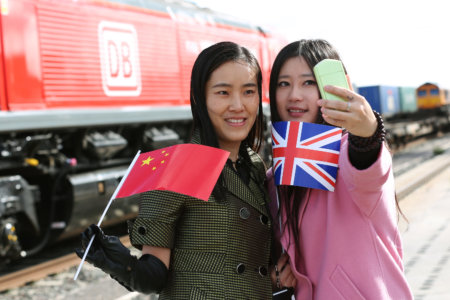
A significant number of international students in the UK come from twinning programmes or pathway courses conducted overseas. A joint study by the British Council and Universities UK International (UUKi) has found that UK universities’ offshore campuses and partnerships remain an important contributor to the total number of international students that progress to study in the UK.
One in six first-degree international students in the UK in 2018-19 consisted of “transnational entrants,” or students who came to the UK via programmes delivered abroad and credit recognition agreements, it said. They fall into two categories: those transferring from overseas universities through twinning programmes or the like, and those progressing from sub-degree pathway qualifications earned overseas.
Using pre-pandemic data from the Higher Education Statistics Agency for the 2018-19 academic year, the study showed that more than 15,000 international students started a degree course in Year 2 or later without previously studying at a UK campus.
International students from China and Malaysia constitute a large number of students who come to the UK through these pathways and partnerships. More than one-third of first-degree students from China join their course in Year 2 or later, while the figure is 40% for students from Malaysia. In contrast, just 10% of undergraduate students come from EU countries, said the report “Transnational routes to on-shore UK higher education.”
Transnational entrants to UK university programmes
Kamala Harris has become a household name this year. In the US, she created history with a long list of “firsts,” including the first black woman vice president. Across the world in the homelands of Kamala Harris’s parents — India and Jamaica — citizens … https://t.co/CGxsahltwU pic.twitter.com/CDc6rFT4Kk
— Study International (@Study_INTNL) November 12, 2020
The amount of time transnational entrants will spend in the UK varies. More than half (58%) arrive in Year 2 of their course and stay in the UK for two or more years. Transnational entrants make up 21% of international first-degree entrants to lower-tariff institutions, compared to only 12% at high-tariff institutions.
The size of this gap is much smaller than that found in previous reports by the Higher Education Funding Council for England (HEFCE) based on data from 2012-13 and 2013-14, as a result of a large drop in the proportion of transnational entrants at low- and medium-tariff HEIs, said the report. The number of transnational entrants to UK first-degree programmes has taken a tumble over the last five years, with the 2014-15 academic year seeing the sharpest decline while recruitment numbers over the last three years have been roughly stable. The largest single drop has been in Malaysia; one interviewee attributed this to the increasing attractiveness of local private institutions. The number of transnational entrants from China increased slightly but has not kept pace with growth in Year 1 entrants from that country.
Twinning programmes and other transnational education options are popular among postgraduates too, especially those from China. A large number of students progress to a master’s in the UK after completing a UK degree taught entirely in China through a “4+0” model (where they earn an overseas degree after studying for four years domestically without setting foot in the UK at all). Most choose a different university for their master’s.
Malaysians buck this trend. “Interviewees involved in transnational education in Malaysia commented that their graduates generally went straight into employment, and would only study a postgraduate degree after working for several years (if at all),” the report said.
“As disruptions to student mobility persist, we will likely see greater demand for UK programmes delivered offshore. At the same time, the pandemic will force universities to turn a more critical eye towards the financial sustainability of their global activities. All we can say for sure now is that overseas partnerships will continue to be important after the pandemic, and yet they will also likely look somewhat different than they did before,” British Council report author Matt Durnin said.
“The report shows the diversity of ways through which UK universities recruit international students. Transnational routes to onshore recruitment have the benefits of offering greater flexibility, the ability to earn both UK and local qualifications, and the chance for those who could not afford to study an entire overseas degree to experience university education in the UK. We may see expansion of this type of route in countries where these benefits become more relevant,” said Eduardo Ramos, UUKi head of transnational education and a key contributor to the report.









